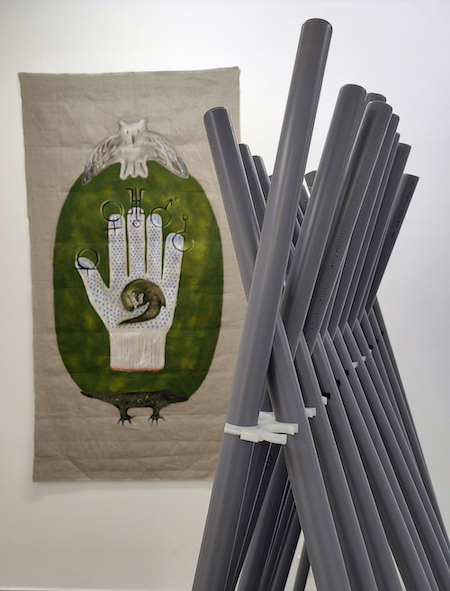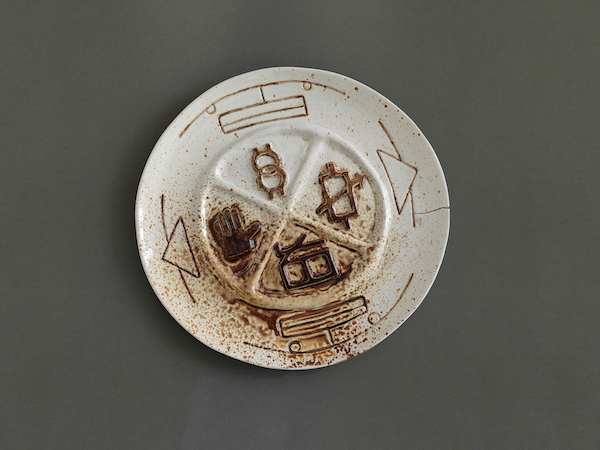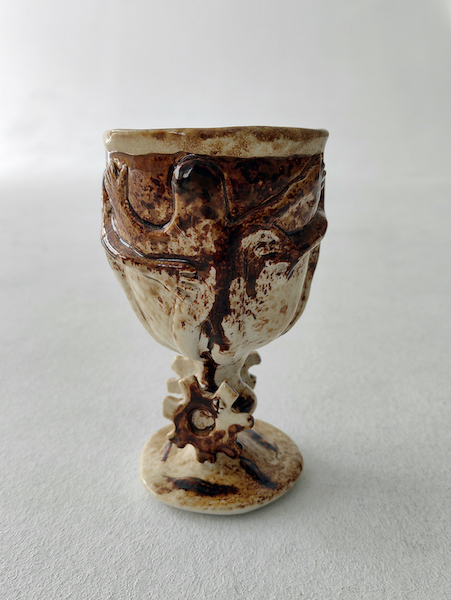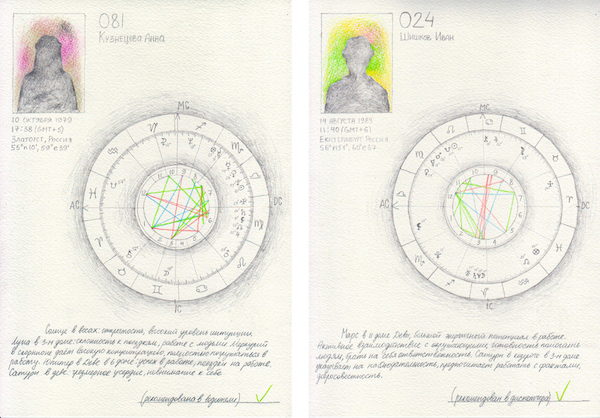









At the moment Iragui gallery stops its exhibition programming in Moscow and lends its platform to the diploma shows of Bachelor’s degree graduates of HSE Art and Design School.
Alena Astakhova in her project “Thin Body of the Industrial Liturgy”, as in many of her works, combines the mythological and the manufacture, equally important themes in the territory of the Urals, where the artist was born. For the young artists of the 2000s, factories and workers were an occasion to bring together the proletariat and the precariat, the revision of historical totals. For the generation of the 2010s this is more like a myth or an intimate family legend. Alena Astakhova presents production processes as alchemical, the factory - as a place of transition between worlds, the apparition of material wealth - as the gain of spiritual experience. Perhaps in this irrational way, the artist is trying to restore respect for the labor of the worker, who in the most literal sense can change the world.
The porcelain objects combine ancient forms of ceremonial items with industrial elements, and all together represents the Path. The “Universal Dagger” presents the totems, a bear and an owl, bolted together with a screw, crowned with a screw wrench, and handed by two types of screwdrivers. With it, we cut the fabric of a reality to step into a new world. Then the “Factory Sigil” goes. It is a plate for summoning and controlling spirits. The symbols on the sigil are taken from engineering diagrams and reworked for mystical tasks: these include symbols for “constant communication”, “regulated pressure” and “communication disconnect”. Opposite the sigil there is the “Black Mirror” held by the bird. The bird is the conductor between worlds; its wings and the edge of the mirror turn into gear teeth. The black mirror is a sort of magic mechanism for transition. On its sides there are two ready-mades from a secret factory at the Urals. The first purpose of these details is unknown. After they were used in everyday life as boards for cutting food due 40 years. Here, in the space of aesthetic perception, they look like the sun and the moon, two poles. Then we move to the “Redemption Hollow”, the place where by shamans’ tradition the things are to be disposed are thrown. Then we reach the “Cup of the Class Struggle,” the factory Grail decorated with workers’ figures stand embraced, and the leg of the cup has gears that allow the movement to continue into the new world.
The paintings and graphics are like pages from an alchemical manuscript, fragments of secret knowledge. The central canvas is the hand of the worker, connecting the three worlds, retrieving treasures from the bowels of the earth. The main minerals and metals (bronze, copper, uranium, iron ore, nickel) mined in the Urals are indicated by alchemical symbols on the fingers of the worker’s glove. The other canvas separately shows the descent into the depths, hard and risky. One of Pavel Bazhov’s tales reveals the myth of a young man who wanted to take his bride, a girl with a golden braid, out of the ground, but instead he went underground himself. It also shows the three stages of metal transmutation, the making of gold, and the joining of partners. Another canvas is the natal chart of a perfect worker, not everyone is allowed to work in a factory. The graphic sheets next to it are examples from the imaginary human resources department archive, where workers are assigned by analyzing natal charts and auras. Another series - maps of the six Ural cities, where only water, bodies and plants are marked, the territory itself is a combination of nature and anthropogenic influence. How do we influence the world? In the center of the exhibition spacе there is an archaic structure like a wigwam or a campfire, made of plastic tubes partly painted like birch trunks. The birch tree in ancient beliefs was the tree that connected the worlds. A campfire or a fireplace at home are also a kind of communication tube. It’s a gathering place for the community. But what are we together for? Shall we burn everything? Shall we look for a shelter?
Alena Astakhova
Born in Chelyabinsk in 1998. Lives and works in Moscow. 2022 - Bachelor’s degree graduate of the National Research University Higher School of Economics School of Design, direction “Design and Contemporary Art”. Mediums: porcelain, ceramics, digital graphic, 3D modelling, web-publishing, video, sound-art, painting.
EXHIBITIONS:
2022 «Constructs of patterns. Part 1: The Сity», Gallery «Na Peschanоy», Moscow
2021 ««ZOOM: al is the most important, Museum of Decorative and Applied Arts, Moscow
2020 «In a marsh», online solo exhibition
2020 6th Сross-regional Academical Travelling Exhibition «Against the Stream», Moscow, Exhibition Hall at Kuznetsky bridge; Kazan, State Museum of Fine Arts of The Republic of Tatarstan; Radishchev Museum in Saratov
2019 «Solid Things», HSE ART GALLERY